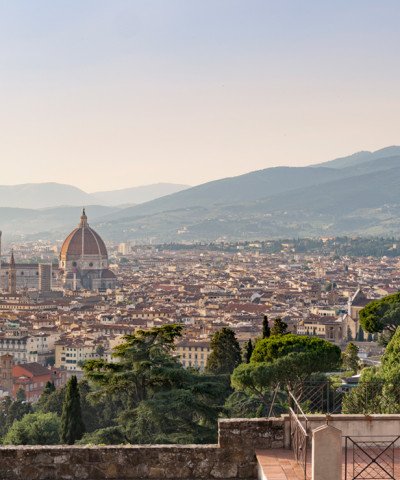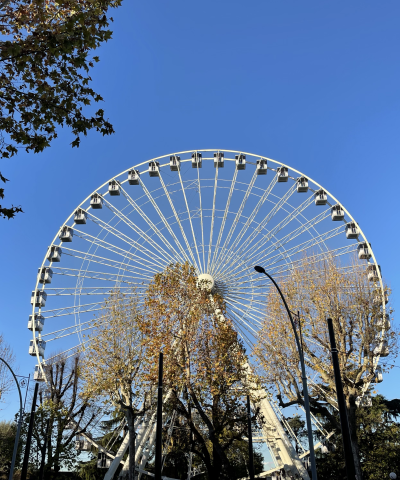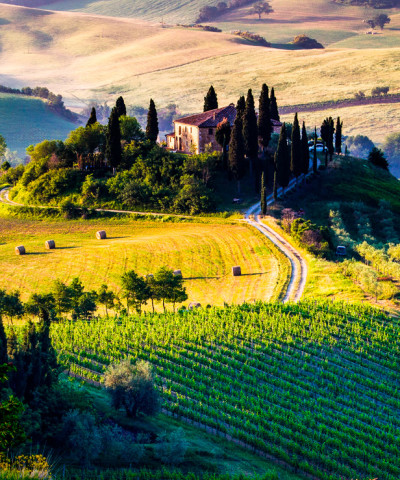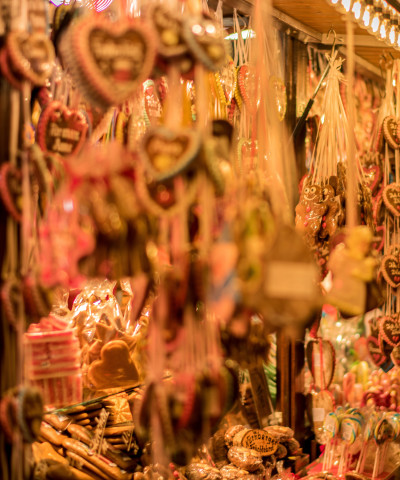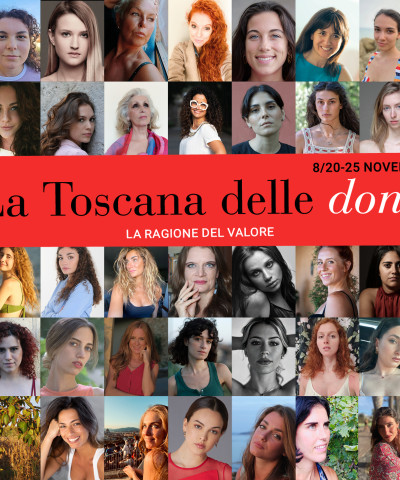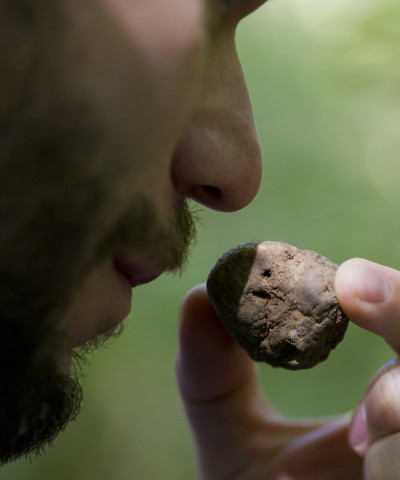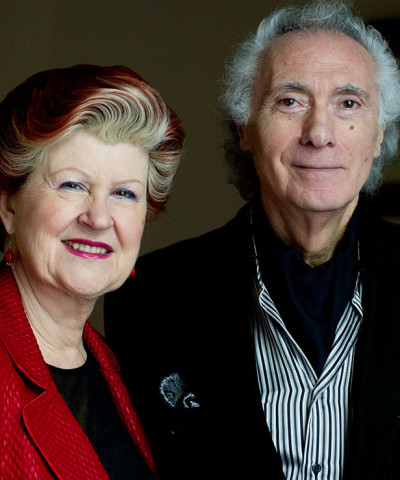Viareggio Carnival
From 3 to 24 February the floats of one of Italy's most famous carnivals will parade again
Six parades with the world's largest allegorical floats, emotions, joy, amazement, fun. This is the magic of the Viareggio Carnival, which throughout February also involves the public in night-time parties in the districts, cultural events, exhibitions, musical and sporting events.
Highly topical themes on the allegorical works, created at the Cittadella del Carnevale by papier-mâché artists, to promote reflections and choices for a better and sustainable future. A reinterpretation of contemporaneity that has long inspired the masters who, through creativity, satire and allegory, invite us to act here and now so that everyone can make the choices of change for possible futures. Twenty-nine allegorical works will parade on the Viali a Mare from 3 to 24 February. Nine first-category floats, four second-category ones, eight group masquerades, and eight isolated masks. Futura is the theme of Fuori Corso, the programme of cultural initiatives in the Viareggio 2024 Carnival programme. Six art exhibitions, concerts, musical performances, guests, conferences, and book presentations enrich the Carnival.
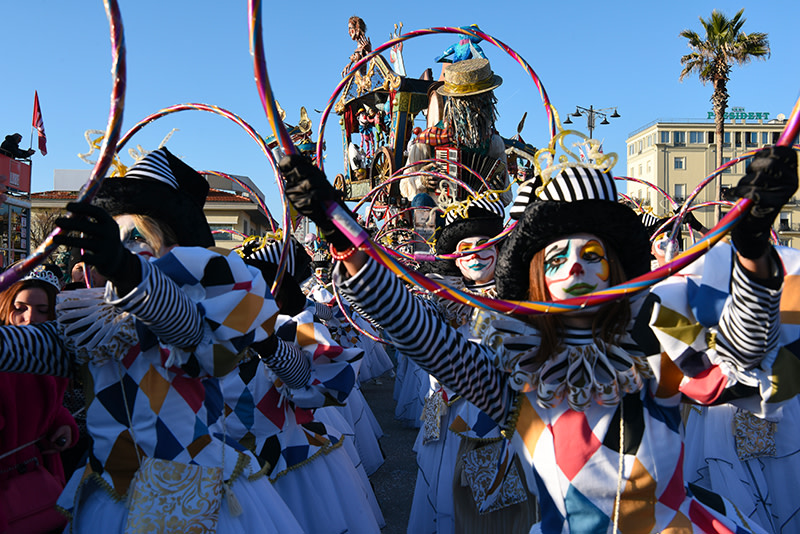 Carnevale di Viareggio - Una storia fantastica, carro di Jacopo Allegrucci
Carnevale di Viareggio - Una storia fantastica, carro di Jacopo AllegrucciAll the historical palaces of the city of Viareggio host art exhibitions for a diffuse narrative between history and contemporaneity: from Venna's futurism to de Chirico's metaphysics, from art's homage to Burlamacco, to the paintings of the artist and Carnival master Beppe Domenici on the centenary of his birth, to satire in the creativity of Sergio Staino. The Carnival's focus on a sustainable world is marked in the 2024 edition by a special project conceived and curated by Maurizio Vanni with a highly interesting programme including seminars, forums, urban art installations and a selection of sketches for floats and masquerades of the past, with the apple at the centre of the project.
Mirco Mariani and Elio sign Farina, Carta e Colla (Betty Wrong Edizioni Musicali / Sony Music Italy) song of the Viareggio 2024 Carnival. Elio and Rocco Tanica with guest Mirco Mariani instead are in concert on 8 February to open the Fat Thursday Masked Course. m2o night is Radio m2o's musical event on 18 February at the end of the Masked Course with Albertino and Fargetta.
Opening Carnival 2024 is the first edition of L'inCanto dei Rioni, the festival featuring children interpreting traditional historical songs and new songs dedicated to the Rioni. The artistic direction is entrusted to Fabrizio Longobardi, aka Il solito Dandy, finalist at XFactor 2023.
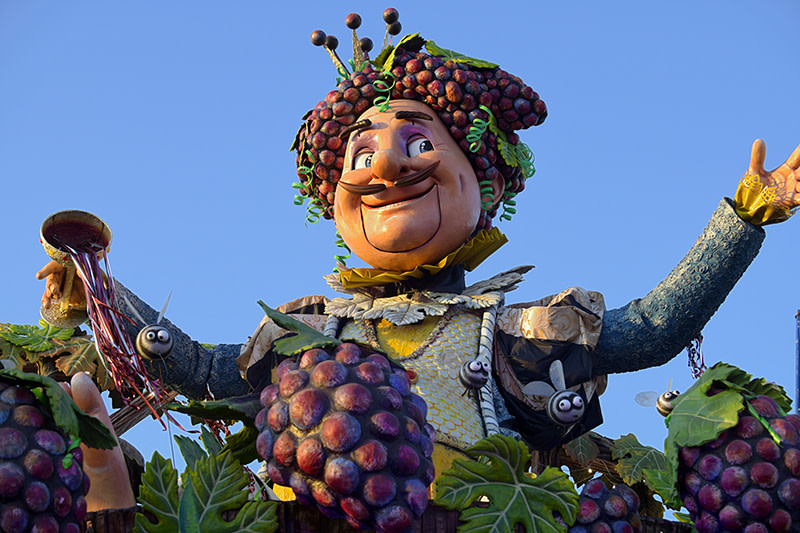 Carnevale di Viareggio - Carneval Divino, carro di Luca Bertozzi
Carnevale di Viareggio - Carneval Divino, carro di Luca BertozziHOW TO PURCHASE TICKETS
Tickets can be purchased online at viareggio.ilcarnevale.com/tickets/ or at the ticket office located at the Cittadella del Carnevale, Via Santa Maria Goretti, 5 phone: +39 0584 580740 and at the entrances of the parade circuit, during the following hours: Monday through Thursday 9 a.m.-1 p.m. and 3 p.m.-6 p.m.; Friday: 9 a.m.-1 p.m. and 3 p.m.-5 p.m.
For questions or information, you can contact the following numbers:
+39 0584 580740 (individual ticket reservations)
+39 0584 580741 (group ticket reservations)
biglietteria@ilcarnevale.com
PROGRAMME
Saturday 3 February
1st MASKED OPENING COURSE - 4 p.m.
At the end Pyrotechnic Show
Maundy Thursday 8 February
2nd NIGHT MASKED COURSE - 6 p.m.
Sunday 11th February
3rd MASKED COURSE - 3 p.m.
Shrove Tuesday 13 February
4th MASKED COURSE - 3 p.m.
Broadcast live on Rai3
Sunday 18th February
5th MASKED COURSE - 3 pm
Saturday 24th February
6th CLOSING MASKED COURSE - 5 pm
At the end reading of the Jury's verdicts and Fireworks Show
OFF-COURSE EXHIBITIONS
MORSI DI SOSTENIBILITÀ. L’ARTE URBANA DIVENTA SOSTENIBILE
Urban art installation curated by Maurizio Vanni
From 12 January to 5 May
Various venues, Viareggio
Bites of sustainability. Urban art becomes sustainable, curated by Maurizio Vanni, organised and coordinated by Omina, is an art installation spread throughout the Viareggio area with the intention of conveying environmental responsibility both in terms of the themes proposed and the use of zero-impact materials. A colourful invasion of 15 "artist's apples", signed by 9 Carnival 2024 carters, placed in five symbolic places of the city (from 12 January to 5 May 2024) that, in an original way, tell the "here and now" of our time.MELA RIDE. DALLA SIMBOLICA MELA ECOLOGICA ALL’IRONICA MELA DELLA TRASFORMAZIONE
From 12 January to 5 May
Lorenzo Viani Gallery of Modern and Contemporary Art, Viareggio
Mela ride. From the symbolic ecological apple to the ironic apple of transformation is the exhibition organised by the Viareggio Carnival Foundation and Omina, from 12 January to 5 May in the Sala Viani of the GaMC - Lorenzo Viani Gallery of Modern and Contemporary Art in Viareggio. An original exhibition that combines the dimensions of creativity declined towards ecological awareness, digital worlds and the magical and unpredictable universe of the Viareggio Carnival. On display, in addition to sketches and photographic images linked to the history of the themed floats, are works of digital art by Moor Gianluca Balocco, Daniela Corsini, Massimo Podestà, Riccardo Saltini and Giampaolo Territo.MASCHERE MOVIMENTO MANIFESTI INNOVAZIONI DEL PRIMO NOVECENTO. LUCIO VENNA E GIORGIO DE CHIRICO
30 January to 5 May 2024
Villa Paolina, Viareggio
The itinerary of the exhibition, hosted - thanks to the collaboration with the Province of Lucca - at Villa Argentina in Viareggio, an Art Nouveau and Modernist masterpiece of the early 20th century, embellished by Galileo Chini's elegant ceramics, is a tribute to two artists of the 'short century': Lucio Venna and Giorgio de Chirico.IL CARNEVALE DI NINO MIGLIORI
curated by Elisabetta Sgarbi
From 21 January to 30 April
Lorenzo Viani Gallery of Modern and Contemporary Art in Viareggio
The exhibition displays over 50 unpublished photographs by Nino Migliori, taken in 2023 on the occasion of the 150th edition of the Viareggio Carnival. The details of the floats that paraded, the hidden sides of the masks, the behind-the-scenes preparation of the festival where every frightening and grotesque image takes on a meaning of freedom.IL MONDO MASCHERERO DI BEPPE DOMENICI
From 1 February to 5 May
Villa Paolina, Viareggio
The exhibition is a focus on an artist who for more than half a century worked and produced art and culture, without bothering to follow the current, free to listen to his instinct. The exhibition unfolds among more than forty canvases created between the 1950s and the 1990s and is an artist's investigation of Domenici into the world of masks and Carnival. One of the most innovative Carnival artists, he has always proposed allegorical works with contemporary languages and themes.BURLAMACCO INCONTRA L’ARTE
From 1 February to 5 May
Villa Paolina, Viareggio
The exhibition, hosted in the rooms of Villa Paolina in Viareggio, is a tribute that numerous artists by profession and artists by passion wanted to make to the mask. Different interpretations in terms of language, style, message, allegory, but united by a single common denominator: the love for the Viareggio Carnival and the desire to delve artistically into this figure, created almost a century ago but of extraordinary modernity.IL CARNEVALE DALLA MATITA DI SERGIO STAINO
From 3 February to 5 May
Carnival Museum, Viareggio
The Carnival Museum hosts a selection of his works, including studies, sketches and completed cartoons. A sort of grand edi- torial spanning the decades from 1984 to 2022. A tribute to the satirical and allegorical creativity with which Sergio Staino has portrayed Italy.
THE LOCAL FESTIVALS OF THE VIAREGGIO 2024 CARNIVAL
The Feste Rionali are the most popular part of the Viareggio Carnival. Entire neighbourhoods come alive with open-air night-time parties where you can dance freely in masquerade, but also dine on traditional Viareggio dishes (starting at 7 pm). The Feste Rionali are held on the weekends of the Corsi Mascherati. In addition, some Rioni organise afternoon events for children.
LA CITTADELLA
The Citadel is the place for creativity and the preservation of the historical and artistic heritage of the Viareggio Carnival. Opened to the public on 26 September 2001, the Citadel of Carnival is the largest park dedicated to the Masks in Europe. Designed by architect Francesco Tomassi, it develops with hangars, workshops and museum spaces around the large square, dedicated to Burlamacco, Viareggio's symbolic mask. This is where the master builders work to create the gigantic allegorical works. An initial exhibition route focuses on the history of contemporary graphic art. The hangar doors where the masters work are like maxi 'screens' for an impactful, oversized narration: from futurism to modern-day languages through a selection of historical Carnival posters. The new museums and the historical archive are an opportunity for visitors to discover the art of papier-mâché and the history of the event, which is approaching its 150th anniversary. At the Citadel, it is also possible to try your hand at working with Burlamacco's raw material through educational workshops for children.
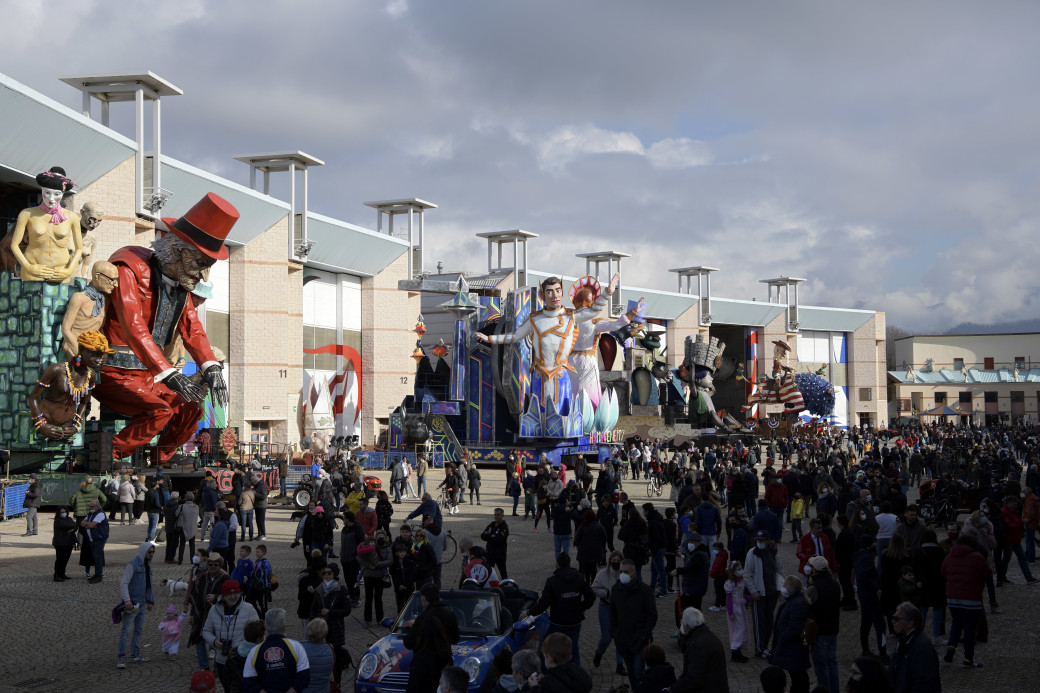 Cittadella del Carnevale di Viareggio
Cittadella del Carnevale di ViareggioCARNIVAL MUSEUM
The historical account of the 150 years of the Viareggio Carnival through a selection of images to document its artistic evolution over the decades. The models, on the other hand, recall the places in the city where the Carnival has grown, cradled by the dedication of its artists and the passion of its citizens. A timeline starting in 1873 and ending in 2001, the year of the inauguration of the Carnival Citadel, today a symbol of creativity, culture and history. The Carnival Museum, therefore, is enriched with an exhibition space that implements the areas already open to the public in the Citadel: the experiential part in the Espace Gilbert, the Historical Archive, the papier-mâché workshops and the ground floor of the Museum itself, which introduces the upside-down world typical of Italian and European carnival traditions.










